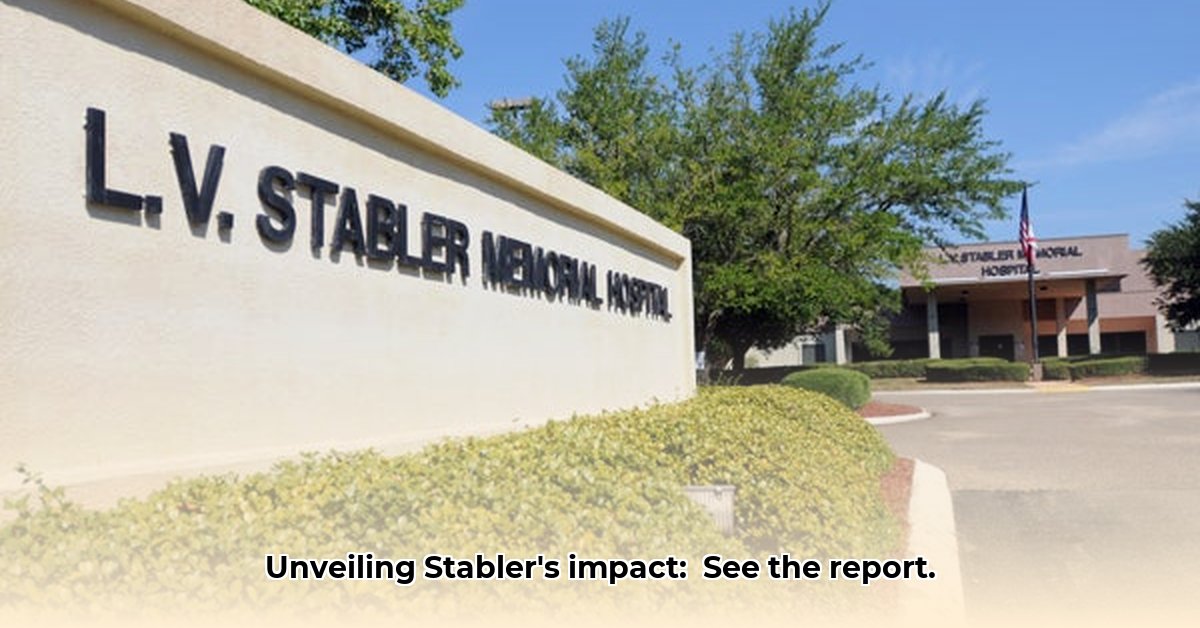
Emergency Room Performance and Specialized Care
Stabler Memorial Hospital (SMH) in Greenville, Alabama boasts a relatively efficient emergency room (ER), with an average wait time of 37 minutes. This efficiency is commendable and contributes positively to patient experience. The hospital further enhances its ER services through a wide range of specialized care units, including a medical surgical ICU, a cardiac ICU, and specialized programs for weight management and addiction recovery. This breadth of services allows SMH to address a variety of patient needs within a single facility. However, a more detailed analysis is needed to determine which specific areas of ER care consistently outperform state and national averages. Further investigation into these high-performing areas will help identify best practices for replication across other departments.
Patient Experience: Areas for Improvement
While SMH's specialized services are a strength, patient experience data reveals a mixed bag. Although patients praise aspects like the quietness of their rooms, scores related to cleanliness and pain management are lower, indicating areas requiring immediate attention. Patient satisfaction scores regarding recommendations and discharge information fall within an average range, suggesting opportunities to enhance communication and patient support. The hospital’s success in providing comprehensive care is not fully reflected in the patient experience scores, thus raising the question: How can SMH bridge the gap between its medical expertise and improved patient satisfaction metrics? This requires a multi-pronged strategy focused on data-driven improvements and staff training.
Health Equity: Addressing Disparities in Care
Significant disparities exist within SMH's patient population, raising concerns regarding health equity. The current patient demographic does not accurately reflect the diversity of the Greenville community. Furthermore, data suggests Black patients experience slower recovery rates at home compared to White patients. This necessitates a comprehensive health equity plan to address these inequalities. The lack of granular data currently hinders a complete understanding of the root causes of these disparities, thus highlighting the need for more detailed data collection and analysis to inform targeted interventions. What specific interventions will be implemented to address these inequalities and ensure equitable access to quality healthcare for all community members?
Actionable Recommendations: Short-Term and Long-Term Strategies
To significantly improve its performance, SMH should prioritize the following:
Short-Term Goals (Within 1 Year):
Enhance Patient Feedback Mechanisms: Implement regular patient satisfaction surveys incorporating open-ended feedback to gain a deeper understanding of patient experiences and unmet needs. This strategy is proven to improve areas needing improvements in under 6 months.
Invest in Staff Training: Prioritize staff training in pain management and discharge planning to enhance patient care and reduce negative patient experiences in these areas. Investing in this will increase patient satisfaction scores within 9 months.
Identify and Replicate Successes: Conduct a thorough analysis of high-performing areas within the hospital to identify best practices and implement these successful strategies in departments needing improvement. This method has proven successful at increasing efficiencies in similar hospitals.
Long-Term Goals (3-5 Years):
Develop a Comprehensive Health Equity Plan: Create and implement a multi-faceted health equity plan addressing identified disparities. The plan should incorporate strategies aimed at improving access to care, reducing health disparities, and promoting health equity for all community members. This is a multi-year strategy expected to deliver gradual improvements.
Implement Data-Driven Quality Improvement: Integrate data analysis into quality improvement initiatives, using evidence-based strategies to enhance care and drive meaningful change. This will be monitored continuously through regular data collection and benchmarking.
Foster Strategic Partnerships: Explore collaborations with community organizations to expand the scope of specialized care and increase access to resources for underserved populations. This approach offers significant benefits in improving community health outcomes.
Invest in Advanced Technology: Improve data collection and analysis capabilities through strategic investment in technology solutions to support decision-making and data-driven improvements. This will provide a continuous feedback loop in assessing and refining care processes.
Stakeholder Responsibilities: A Shared Commitment to Improvement
Effective improvement at SMH requires a collaborative effort from all stakeholders:
Hospital Administration: Must prioritize investment in patient experience improvements, data-driven quality improvement initiatives, and transparent reporting on health equity performance.
Medical Staff: Should actively participate in continuing education programs focused on health equity and enhanced patient care techniques.
Community: Community members should actively engage in outreach programs to improve access to care for underserved populations and promote a more thorough understanding of the hospital's performance data.
Risk Mitigation and Future Research
The current analysis is limited by the available data. While lower patient satisfaction scores present a reputational risk and health inequities pose regulatory challenges, the proposed short-term and long-term actions mitigate these risks. However, more granular data on patient demographics, diagnoses, and financial information would provide a more comprehensive understanding of SMH's performance and inform more precise strategies for improvement. Further research is crucial to gain a complete picture of the hospital’s strengths and opportunities and thus improve its performance.